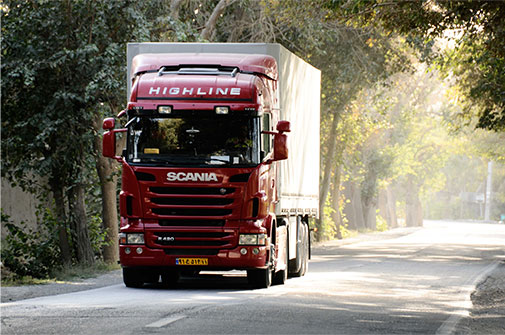The Strategic Importance of Road Transportation in Iran’s Economy The Role of Transport Companies in Driving Growth and Revenue
The Strategic Importance of Road Transportation in Iran’s Economy The Role of Transport Companies in Driving Growth and Revenue

The Strategic Importance of Road Transportation in Iran’s Economy
The Role of Transport Companies in Driving Growth and Revenue
Abstract
As a vital artery in Iran's logistics and economic ecosystem, road transportation plays a central role in supporting domestic commerce, facilitating international trade, and unlocking non-oil revenue streams. This paper explores Iran's road transport sector, its geoeconomic potential, the opportunities for logistics service providers, and the structural reforms needed to maximize its value.
1. Road Transport as the Backbone of Iran’s Trade and Supply Chain
In Iran, over 75% of domestic freight movement and nearly 90% of exports to neighboring countries rely on road transportation. Given the limited functionality of rail and air alternatives, trucking remains the primary mode of freight delivery, connecting industrial hubs to ports, borders, and final markets.
Road transport supports not only logistics but also acts as a catalyst for regional development, employment generation, and urban-rural integration.
2. Iran’s Geo-Strategic Transit Potential: The North-South Link
Iran is geographically positioned at the heart of the Middle East, serving as a natural land bridge between Asia, Europe, the Caucasus, and the Persian Gulf. It plays a critical role in major international corridors such as:
The International North-South Transport Corridor (INSTC)
The China-Central Asia-Europe Belt
The Persian Gulf–Black Sea multimodal corridor
According to the UNESCAP Transport Outlook (2023), Iran could generate up to $8–10 billion annually in transit revenue, should it realize even a fraction of its regional transit capacity.
3. Revenue Opportunities for Iranian Transport Companies
Professional transport companies operating within and beyond Iran’s borders are key players in monetizing logistics capabilities. Potential revenue streams include:
Regional Export Transport: Efficient trucking to Iraq, Afghanistan, Pakistan, and Central Asia offers billions in logistics turnover per year.
Domestic Freight Optimization: By reducing inefficiencies, road transport firms can help cut logistics costs by up to 20% for Iranian manufacturers and distributors.
Value-Added Logistics Services: Growth areas include cross-docking, bonded warehousing, cold chain logistics, customs clearance, and supply chain visibility solutions.
Integration into Digital Freight Marketplaces: Technology-driven logistics platforms create new margins for operators offering real-time freight matching and route optimization.
4. Structural Challenges Facing Iran’s Road Transport Sector
Despite its potential, the road transport sector in Iran faces deep-rooted structural issues:
Aging fleet (average truck age exceeds 18 years)
Lack of modern border terminals and logistics zones
Inefficient customs procedures and fragmented documentation
Absence of an independent logistics regulatory authority
These barriers undermine Iran’s competitiveness in the global supply chain and limit the ability of transport companies to scale internationally.
5. Policy Recommendations for Sustainable Revenue Growth
To unlock the full economic potential of Iran’s road transport sector, the following measures are recommended:
Fleet Modernization: Introduce financing schemes and tax incentives for replacing aging trucks with Euro 5/6-compliant models.
Development of Border Logistics Parks: Enable PPP models for constructing modern dry ports and multimodal terminals.
Digital Transformation: Integrate customs and freight processes into a single-window platform with real-time cargo tracking.
Private Sector Empowerment: Encourage freight companies to form consortia and participate in international tenders and corridors.
6. Conclusion
With its strategic location, large domestic market, and experienced logistics workforce, Iran has the potential to become a regional logistics hub. The road transport sector, if supported by policy, investment, and innovation, can significantly contribute to non-oil revenue growth, regional connectivity, and supply chain resilience.
Iranian transport companies are well-positioned to lead this transformation by embracing technology, offering integrated services, and competing in international markets.
References
Ministry of Roads and Urban Development (2023) – Annual Transport Statistics
UNESCAP (2023) – Asia-Pacific Transport Outlook
World Bank (2022) – Logistics Performance Index
Iran Chamber of Commerce – National Logistics Development Strategy
Parliament Research Center – Transport Policy Briefs

